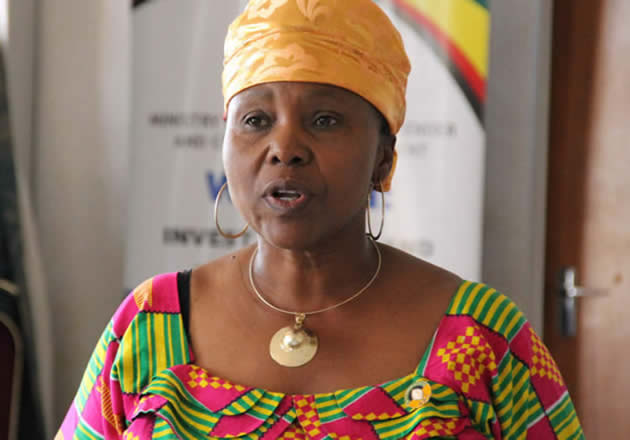Brace for drought: Experts

Samantha Chigogo Herald Reporter
Most parts of the country will this season experience drought, while the rainfall pattern for northern areas will be better and within the normal range, with a slight bias towards above normal rains.
A localised rainfall forecast released by the Government yesterday indicated that for the period January to March 2016, Matabeleland South, Matabeleland North, Bulawayo, Masvingo and the southern parts of the Midlands and Manicaland provinces were likely to receive below normal rainfall.
For the period October to December, the same areas would have experienced normal to below normal rainfall.
Northern parts of the country (Mashonaland provinces, Manicaland, Harare, the northern areas of Masvingo and Midlands) will fare better with normal to above normal rainfall.
Speaking at a Press conference yesterday where she released the localised rainfall forecast for the 2015-16 season yesterday, Environment, Water and Climate Minister Oppah Muchinguri-Kashiri said the country had to brace itself for a drought in the approaching season.
“In other words, as for now, chances are high that our season may not get the usual rains,” she said.
“It must be pointed out that, despite the outlook, the weather patterns have changed abruptly.
“Accordingly, the ministry will continue monitoring the weather and rainfall pattern and will continue to provide regular updates.”
Minister Muchinguri-Kashiri said rainfall was becoming too extreme and highly variable from year-to-year.
She said between October and December this year, on average the country would experience very low rainfall which would gradually increase from late December to February next year when the rains are forecast to be within the normal range.
Minister Muchinguri-Kashiri said the 2015-16 rainfall outlook had several implications on agriculture, food security, health, energy and disaster risk reduction.
“For example, the generation of electricity in the Kariba Dam relies heavily on the generated run-off into the dam as well as the water level in the dam,” she said.
“May the nation be advised that despite the forecast of normal to below normal rains, floods are also expected.”
Electricity generation at Kariba Power Station has already been reduced due to low water levels in the dam.
Minister Muchinguri-Kashiri said the ministry was introducing national quarterly forecasts, which would assist farmers and water users to prepare adequately and well in advance with regards to the various energy and agro-related activities.
She said Government would carry out cloud seeding to help increase the rainfall.
“Government is mobilising resources for the ministry to carry out urgent National Cloud Seeding Programme starting in November 2015 until March 2016,” she said.
“This is meant to augment rainfall for agriculture purposes as well as water in our dams and catchment for irrigation, livestock and portable water.”
Minister Muchinguri-Kashiri said two planes will be used for the purpose.
“The two airplanes will divide the country into two, as one plane will cover the southern region of the country (Chiredzi and Bulawayo), whilst the other will cover the northern region (Harare),” she said.
“As of now, the Ministry of Finance has availed $200 000 towards the cloud seeding project and we are working to ensure that we put these funds into good use towards this priority area.”
Minister Muchinguri-Kashiri said siltation and the vanishing of wetlands in the country’s major water sources was alarming.
“Rivers are no longer flowing all year round, wetlands disappearing and the water table getting deeper, for example Save River in Manicaland province and Munyati River in Midlands province,” she said.
Zimbabwe’s rainfall season normally starts in October in the southern and western areas and in November in the northern provinces.
The end of the rains is also varied, ending usually early February in the southern areas and early April in the northern provinces.
A regional outlook issued by the Sadc Climate Services Centre in August indicated that most mainland Sadc countries, including Zimbabwe, would receive between normal to below normal rainfall.
Experts have since implored Government to ensure that seed for drought resistant crops and short season varities is available to mitigate the effects of drought.








Comments